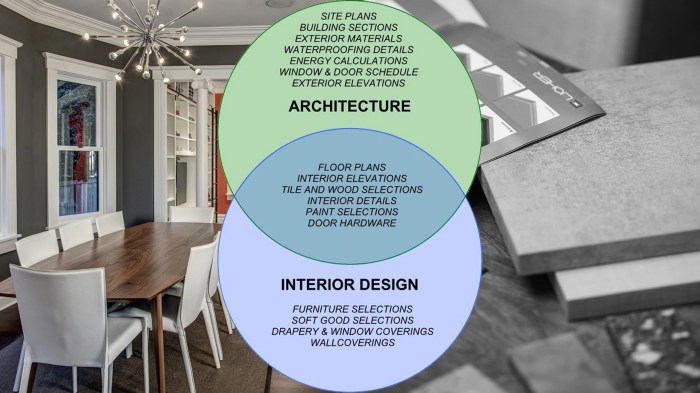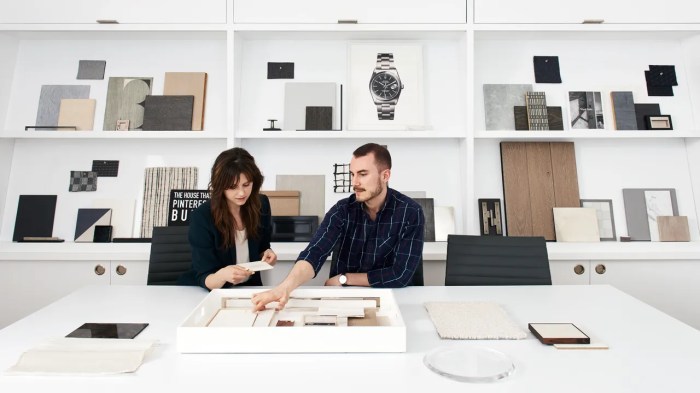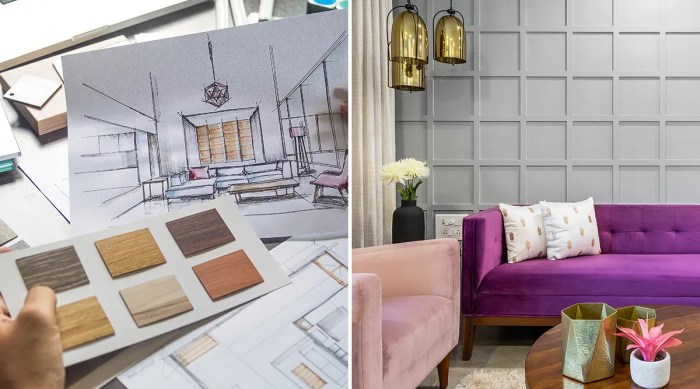Delving into the world of architecture and interior design unveils a realm of creativity and innovation. From shaping the structural elements to curating the aesthetic appeal, architects and interior designers play pivotal roles in bringing spaces to life. Let's embark on a journey to understand the nuances of their profession.
The Role of an Architect and Interior Designer

An architect plays a crucial role in a construction project by designing and overseeing the construction of buildings, ensuring they are safe, functional, and aesthetically pleasing. On the other hand, an interior designer focuses on creating functional and visually appealing interior spaces that meet the client's needs and preferences.
Primary Responsibilities of an Architect
- Developing initial concepts and designs for buildings based on client requirements and budget constraints.
- Creating detailed construction drawings and specifications to guide the building process.
- Collaborating with engineers, contractors, and other professionals to ensure the project runs smoothly.
- Obtaining necessary permits and approvals from local authorities.
- Overseeing the construction process to ensure the design intent is realized.
Key Tasks of an Interior Designer
- Consulting with clients to determine their needs, preferences, and budget for the interior space.
- Creating design concepts and mood boards to present to clients for approval.
- Selecting furniture, fixtures, finishes, and materials that align with the design concept and budget.
- Coordinating with contractors and vendors to implement the design plan effectively.
- Ensuring the final interior space meets functional, aesthetic, and safety requirements.
Comparison of Roles
| Architect | Interior Designer |
|---|---|
| Focuses on the overall design and structure of a building. | Concentrates on the interior layout, aesthetics, and functionality of a space. |
| Works closely with engineers and contractors to bring the building design to life. | Collaborates with furniture vendors and contractors to implement the interior design. |
| Requires knowledge of building codes, regulations, and structural engineering. | Needs expertise in color theory, space planning, and interior decorating. |
| Ensures the building is safe, sustainable, and meets the client's needs. | Creates interior spaces that reflect the client's personality and style preferences. |
Education and Training
To become an architect, individuals typically follow a specific education path that includes obtaining a professional degree, gaining practical experience through internships, and passing a licensing exam. On the other hand, interior designers also need to meet certain qualifications and certifications to practice legally.
Let's delve into the educational requirements for architects and interior designers.
Education Path for Architects
- Obtain a Bachelor's degree in Architecture (B.Arch) or a related field.
- Complete a Master's degree in Architecture for advanced knowledge and specialization.
- Participate in internships to gain practical experience and understanding of the industry.
- Pass the Architect Registration Examination (ARE) to obtain a license to practice.
Qualifications and Certifications for Interior Designers
- Complete a Bachelor's degree in Interior Design or a related field.
- Gain experience through internships or entry-level positions in design firms.
- Obtain certifications such as the National Council for Interior Design Qualification (NCIDQ) exam for professional recognition.
- Continuing education to stay updated on trends, materials, and technologies in the field.
Comparison of Educational Requirements
| Architects | Interior Designers |
|---|---|
| Bachelor's and Master's degree in Architecture | Bachelor's degree in Interior Design |
| Passing the Architect Registration Examination (ARE) | Obtaining certifications like NCIDQ |
| Focus on structural design, building systems, and construction | Emphasis on space planning, color theory, and material selection |
Skills and Expertise

Architects and interior designers require a specific set of skills and expertise to excel in their respective fields.
Essential Skills for a Successful Architect
- Strong design and drawing abilities
- Excellent problem-solving skills
- Attention to detail
- Technical proficiency in architectural software
- Project management skills
- Effective communication skills
Creative Capabilities for an Interior Designer
- Imaginative and innovative thinking
- Understanding of color theory and spatial relationships
- Ability to create mood boards and design concepts
- Knowledge of materials and finishes
- Attention to aesthetics and functionality
Collaboration between Architects and Interior Designers
Collaboration between architects and interior designers is essential to create cohesive and successful projects. Architects focus on the structural and exterior elements of a building, while interior designers concentrate on the interior spaces. By working together, they can ensure that the overall design meets both aesthetic and functional requirements.
Architects provide the framework and layout, while interior designers bring in their expertise to enhance the space through furniture, finishes, lighting, and decor.
Design Process
When it comes to architectural and interior design, the design process is a crucial aspect that guides the creation of functional and aesthetically pleasing spaces. Both architects and interior designers follow a series of steps to bring a project from concept to completion, ensuring that the final result meets the client's needs and vision.
Architectural Design Process
The architectural design process typically involves the following stages:
- Programming: Understanding the client's requirements, project goals, and constraints.
- Schematic Design: Developing preliminary sketches and concepts to visualize the project.
- Design Development: Refining the chosen concept, integrating structural and mechanical systems.
- Construction Documents: Creating detailed drawings and specifications for construction.
- Bidding and Negotiation: Obtaining cost estimates and selecting a contractor.
- Construction Administration: Overseeing the construction process to ensure the design is implemented correctly.
Interior Design Process
Similarly, the interior design process includes the following stages:
- Initial Consultation: Discussing the client's needs, style preferences, and budget.
- Concept Development: Creating mood boards, color schemes, and design concepts.
- Design Presentation: Presenting the proposed design to the client for feedback and revisions.
- Design Development: Refining the design, selecting materials, furnishings, and finishes.
- Documentation: Creating detailed drawings and specifications for implementation.
- Implementation: Overseeing the installation and styling of the space to bring the design to life.
Collaboration between Architects and Interior Designers
Architects and interior designers often work together seamlessly to ensure a cohesive design from concept to completion. For example:
- Architects and interior designers collaborate during the schematic design phase to integrate structural elements with interior finishes.
- Interior designers provide input on material selections, lighting design, and furniture layouts that complement the architectural design.
- Throughout the construction administration phase, architects and interior designers work together to address any design changes or challenges that arise during the building process.
Final Review

In conclusion, architects and interior designers are the masterminds behind the beauty and functionality of our living and working spaces. Their collaborative efforts result in harmonious designs that enrich our daily experiences. As we part ways, let's appreciate the artistry and expertise they bring to the table.
Clarifying Questions
What are the primary responsibilities of an architect in a construction project?
Architects are tasked with designing and planning the overall structure of buildings, ensuring they are safe, functional, and aesthetically pleasing.
What qualifications and certifications are necessary for interior designers?
Interior designers typically need a bachelor's degree in interior design and may pursue certifications such as NCIDQ for professional practice.
What essential skills are needed for a successful architect?
Effective communication, creativity, attention to detail, and technical proficiency are key skills for architects to excel in their profession.
How do architects and interior designers collaborate to enhance a project?
Architects focus on the structural aspects while interior designers emphasize the aesthetics and functionality of the space, working together to create cohesive designs.









